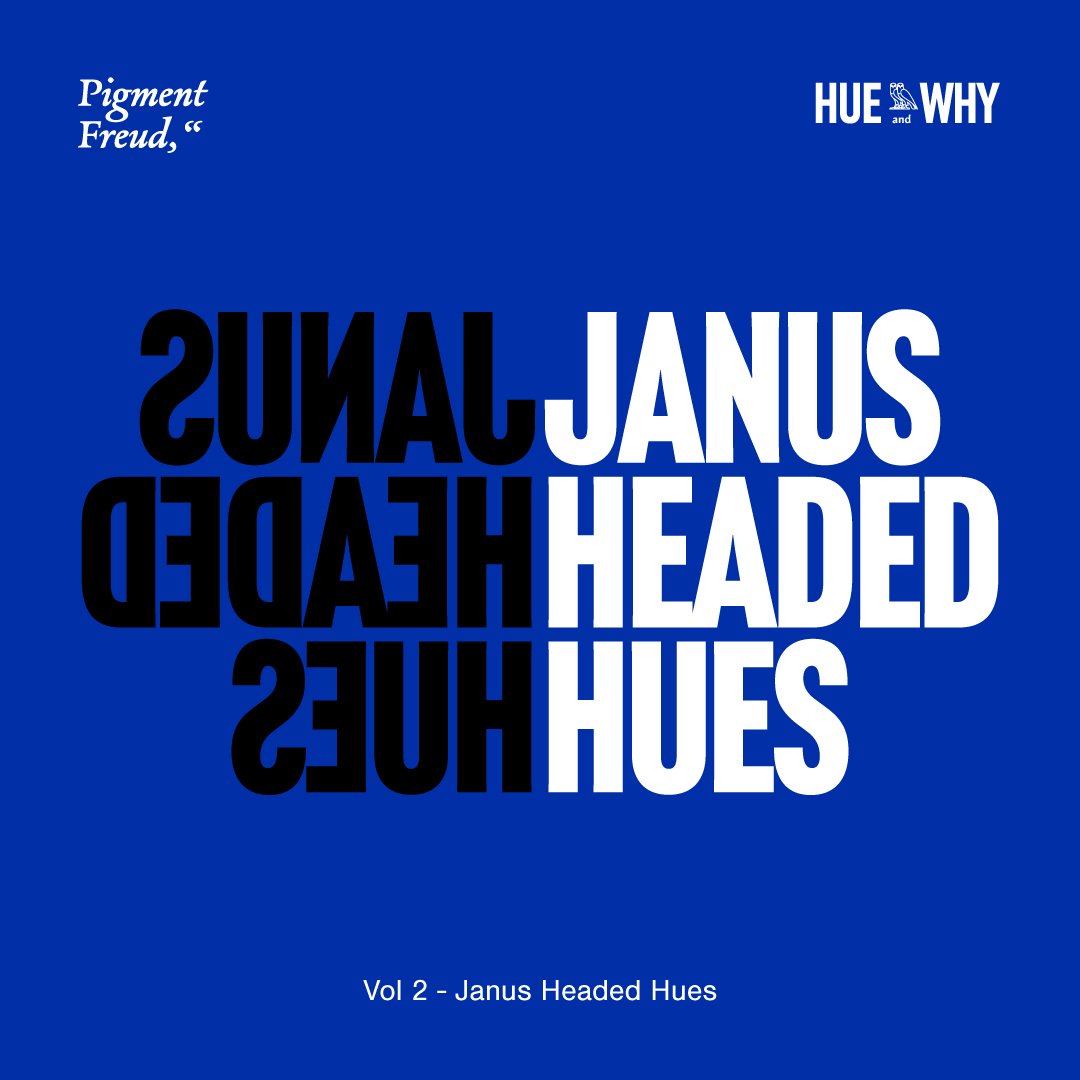Janus Headed Hues
The Roman God of Duality, Janus, is depicted with two heads - one facing the past and one facing the future, both symbolising the inherent contradictions in everyday life. This powerful concept of binary opposition is what we see in concepts like the Yin & Yang, or closer home, the Purusha & Prakriti principle.
Having set out on a journey to delve into colour meanings in culture, I once got an opportunity to stare at this Yves Klein painting in a modern art gallery in Rome. I focused on the famed International Klein Blue, and somehow my mind wandered to some of the other brilliant blues I have experienced. To the magical Indigo in indigo vats. To the turquoise blues of the pristine beaches. To the pale skies and the calming rivers. Blue evoked opposing emotions in me. The turbulence of the stormy skies and the angry waves, but also the calm of the lulling waves and the hope of the open skies. Then it struck me, that there is a certain two facedness in this one single colour. Blue is indeed two faced, I concluded.
There were more pieces of evidence that I stumbled upon, strengthening my belief that Blue has contradictory symbolisms. It is water that is life sustaining, but also poison (think halahala that Shiva swallowed, earning him the name Neelkanth), that is life threatening. Blue is considered to be the colour of toxins, anything artificial - like plastic sheets.
This mysterious character of Blue captivated me for a long time. Then I shook myself out of my awe-struck, blue obsessed state and moved on to other colours. Little did I realise that this binary nature was an inherent part of most colours. Over the many hours spent seeming like a mad woman obsessed with solid colour blocks, I felt myself thoroughly caught in this web of intangible mysteries of colours.
Anish Kapoor’s pyramidical, phallic, vulva-like red installations, the blood spattered effects, the huge blocks of wax, have caught my attention for years. Whether it is ‘Mother as Mountain’, ‘Marsyas’, or ‘Shooting into the Corner’, the blood/life and bloodshed/death aspects of the colour stays embedded in your mind. There is also the Dark Palette and red abstracts of Mark Rothko, that strips down the emotional power of art to its barest forms. Red on red. Engulfing the viewer. Drawing him into this world of red. There is blood and everything that makes life so exciting (energy, excitement, anger, revenge, lust, sensuality, aggression) and also bloodshed and finally death (war, battle, revolt, protest. rebellion, murder, gore). It is the intensity of life as well as the darkness of death.
And then there was The Homage to the Squares series by Josef Albers - specifically ‘Departing in Yellow’, little yellow squares making a geometric pattern. Each square is a slightly different version of yellow. What was it in the interplay of these yellows, you ask. Well, yet again, duality. It is the sun that energises and catalyses growth, at the same time it is fire or heat that makes things wither away, decay and decompose. By now I was convinced that it wasn't just Blue that was holding two different worlds within it, that it was all of them colours. Each one of them held within it these uncanny allusions toward opposing realms.
There is a basic argument in the book Chromophobia by David Batchelor, which appalled me - that colour itself is a symbol of contamination. It goes a bit too far, saying that every colour other than white, is impure. Le Corbusier says form comes first, colour is insignificant - he goes so far as to say that every house should be 'whitewashed' (cleansed) with a coating of white Ripolin paint (he has termed this as the Law of Ripolin). White, just white, for simplicity and morality. On the other hand pure white is something that only the rich can afford - it goes with the subtext of ‘I do not need to travel by public transport - I wear clean clothes’. Pearls, diamonds, fairer skin, etc., have come to connote a certain sense of vanity and therefore maybe impurity or a biased/discriminatory vibe to white.
Gods of death, across cultures, are depicted in black. It is the colour of night, death, endings. A perfect colour to end this piece with. But alas, it is also a colour associated with beginnings - it is the colour of the silt that River Nile deposited every year after the floods, making the land fertile. It is also the beginning of art, simple lines with black charcoal. And of course, night that gives way to day, a new beginning.
We end with black, here, but will also continue our musings on colour soon.
An ending, but also a promise to begin again. Duality, everywhere. Eerie much?
Written by Susan Mathen

